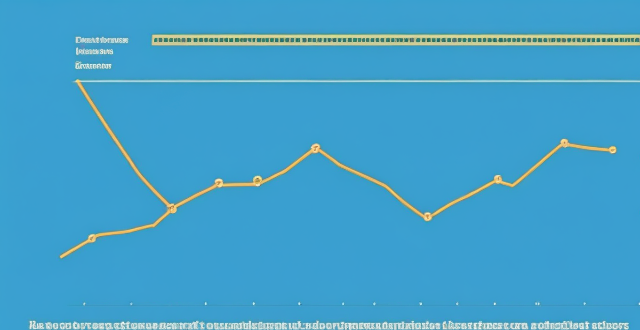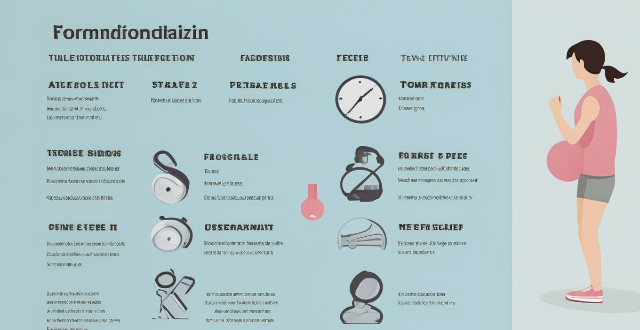Progress Assess

What methods can be used to assess a child's progress in homeschooling ?
In recent years, homeschooling has become a popular option for parents who prefer to educate their children at home. However, assessing a child's progress in homeschooling can be challenging for both parents and educators. In this article, we will discuss some methods that can be used to evaluate a child's academic and personal growth in a homeschooling environment. Regular testing and evaluations are one of the most effective ways to assess a child's progress in homeschooling. This can include standardized tests, such as the Iowa Test of Basic Skills or the Stanford Achievement Test, which measure a child's knowledge and skills in various subject areas. Additionally, parents can create their own tests and quizzes based on the curriculum they are using. Another method for evaluating a child's progress in homeschooling is through portfolio assessment. This involves collecting samples of a child's work over time, such as writing assignments, science projects, art pieces, and other creative endeavors. By reviewing these samples, parents and educators can gain insight into a child's strengths, weaknesses, and overall development. Observing a child's daily activities and keeping a record of their progress through journaling can also be an effective way to assess their development in homeschooling. Parents can observe their child's behavior during lessons, note any challenges or successes, and track their progress over time. Finally, receiving feedback from others can provide valuable insights into a child's progress in homeschooling. This can include feedback from tutors, online teachers, or even family members who have observed the child's learning process. By gathering input from multiple sources, parents can gain a more comprehensive understanding of their child's academic and personal growth. In conclusion, assessing a child's progress in homeschooling requires a combination of methods, including regular testing and evaluations, portfolio assessment, observations and journaling, and feedback from others. By utilizing these strategies, parents and educators can gain a better understanding of a child's academic and personal growth and make informed decisions about their educational journey.

How often should I review my study plan to ensure its effectiveness ?
To ensure the effectiveness of your study plan, it's crucial to review it regularly. Weekly reviews help assess progress, adjust timelines, identify challenges, celebrate successes, and make necessary changes. Monthly reviews involve evaluating overall goals, reflecting on learning style, considering external factors, setting new goals, and updating the plan. Quarterly reviews analyze long-term progress, revisit motivation, assess habits and routines, seek feedback, and create a new plan. Being flexible and open to making changes is key.

How do you measure progress in students with special education needs ?
Measuring progress in students with special education needs (SEN) is crucial for understanding the effectiveness of interventions and ensuring appropriate education. Identify goals through Individualized Education Plans and focus on functional skills. Use formative assessments, standardized testing, and alternative assessments to monitor progress. Implement progress monitoring tools and analyze data to inform instructional decisions. Ensure accommodations and modifications are effective and regularly updated. Maintain open communication with parents and collaborate with a team to support the student's development.

How do I measure progress in my sports training plan ?
Measuring progress is crucial for athletes to track development and adjust their training plans. Set SMART goals, track performance, evaluate technique, monitor body composition, assess fitness level, and reflect on mental state to measure progress effectively.

How can we measure progress towards achieving the Sustainable Development Goals ?
The text discusses the importance of measuring progress towards achieving the Sustainable Development Goals (SDGs) set by the United Nations in 2015. It outlines seven key steps to effectively monitor and evaluate this progress: establishing baseline data, tracking specific indicators, reporting and reviewing progress, utilizing technology, engaging stakeholders, addressing data gaps, and ensuring transparency and accountability. Each step includes a detailed explanation of methods and strategies to implement it successfully. The goal is to provide a structured approach for countries and organizations to assess their performance in meeting the ambitious objectives aimed at tackling global challenges such as poverty, inequality, and environmental degradation.

How can I track my progress if I'm only exercising at home ?
**Tracking Progress in Home Exercises** When working out at home, monitoring your progress helps you stay motivated and makes adjustments to your routine. Here are key strategies: 1. **Set Clear Goals:** Divide goals into short-term (e.g., increasing push-ups) and long-term (e.g., weight loss). Ensure they're specific and achievable. 2. **Keep a Workout Journal:** Record details of each session, reflect on what works, and make necessary changes. 3. **Use Technology:** Fitness apps and smart devices can track metrics like steps and heart rate. 4. **Take Measurements:** Regularly measure weight, body fat, and performance metrics to see physical changes. 5. **Evaluate Intensity and Recovery:** Use RPE to assess workout difficulty and monitor recovery times after exercise. 6. **Compare Against Baseline:** Regularly reassess initial measurements and performances to gauge improvement. 7. **Utilize Visual Cues:** Photos and mirror checks can show changes in your physique over time. 8. **Engage in Strength Training:** Track the weight lifted and rep maxes to indicate strength gains. 9. **Focus on Feel and Function:** Pay attention to how your body feels during workouts and improve the quality of movement. By employing these methods, you can effectively track your progress while exercising at home, ensuring consistent improvements and maintaining motivation.

How do you identify and assess risks in a business environment ?
In a business environment, identifying and assessing risks is crucial for ensuring the success and sustainability of an organization. The process involves identifying potential risks, categorizing them based on likelihood and impact, assessing each risk individually, developing a risk management plan, and monitoring and reviewing risks regularly. This helps prioritize which risks need to be addressed first and develop strategies to manage them effectively.

How much time should I dedicate daily to achieve rapid progress in a foreign language ?
To achieve rapid progress in a foreign language, itTo achieve rapid progress in a foreign language, iticate a significant amount of time it is crucial to dedicate a significant amount of time daily to practice and study, including both active and passive learning activities. Establishing a daily study routine, setting realistic goals, and maintaining consistency are key strategies for success.

Are there any apps or tools that can help me track my progress in understanding different texts ?
The text discusses various apps and tools that can help users track their progress in understanding different texts, including Reading Comprehension Apps like Quizlet and Khan Academy; Productivity Tools for Text Comprehension such as Evernote and Trello; Online Tools for Text Analysis like SparkNotes and CliffsNotes; and Personalized Learning Platforms like Adaptive Learning Systems. These resources provide features such as flashcards, video tutorials, annotations, note-taking, project boards, database views, plot summaries, character analysis, chapter-by-chapter breakdowns, close reading, personalized pathways, real-time feedback, and reading logs to aid comprehension and monitor progress.

What is the Paris Agreement and how does it contribute to global climate governance ?
The Paris Agreement, adopted in 2015, is a landmark global climate change agreement aimed at limiting global warming to below 2°C and pursuing efforts to limit it to 1.5°C above pre-industrial levels. It contributes significantly to global climate governance by establishing mechanisms such as Nationally Determined Contributions (NDCs), enhancing transparency and accountability, providing finance and capacity building, addressing loss and damage, conducting global stocktakes, and setting long-term goals. These measures help track progress, hold countries accountable for their commitments, support vulnerable nations, assess collective progress, and encourage more aggressive action towards mitigating climate change.

How has climate action evolved over the past decade, and what progress has been made ?
Over the past decade, significant strides have been made in the realm of climate action. This evolution is characterized by increased awareness, global mobilization, technological advancements, and policy changes aimed at mitigating the effects of climate change. Key aspects of this progress include: 1. **Increased Awareness and Global Mobilization**: Public awareness about climate change has grown substantially, thanks to educational initiatives, media campaigns, youth-led movements like Fridays for Future, and UNFCCC COP conferences. 2. **Technological Advancements**: Remarkable progress in renewable energy technologies, electric vehicles, energy efficiency, and carbon capture has been made. 3. **Policy Changes and Legal Frameworks**: Many countries have implemented policies to reduce greenhouse gas emissions and promote clean energy. The Paris Agreement set a global framework for combating climate change. 4. **Financial Investments and Market Mechanisms**: Green finance, carbon pricing, and investment in sustainable infrastructure are on the rise. 5. **Corporate Responsibility and Innovation**: Corporations are setting sustainability goals, managing their supply chains more sustainably, and consumers are choosing environmentally responsible products. 6. **Civil Society and Community Action**: Grassroots organizations lead community-based actions, local communities establish renewable projects, and NGOs advocate for stronger climate policies. 7. **Research and Collaboration**: Ongoing scientific research, international platforms, and open data initiatives foster collaboration and better understanding of climate solutions. 8. **Challenges and Setbacks**: Despite advancements, challenges remain, including political will, economic barriers, inequity, and loss and damage from climate change. In conclusion, while notable progress has been made in climate action over the past decade, continued efforts across all sectors will be required to meet ambitious goals and limit climate change impacts.

How do countries measure their progress towards achieving climate goals ?
Countries measure their progress towards achieving climate goals through various indicators and metrics. These include Nationally Determined Contributions (NDCs), greenhouse gas inventories, renewable energy production, carbon intensity, forest cover and land use changes, climate finance flows, policy implementation, and public awareness and participation. By tracking these factors, countries can assess their performance in reducing emissions, adapting to climate impacts, and supporting global efforts to combat climate change.

How often should I change up my sports training routine to avoid plateauing ?
To avoid plateauing in sports training, it's important to periodically change your routine based on your goals, progress, and how your body feels. Incorporating variety, monitoring progress, and seeking professional guidance can help you continue making gains in your chosen sport.

What are the best ways to assess reading comprehension levels ?
Assessing reading comprehension levels is crucial in identifying strengths, weaknesses, and areas for improvement. Various methods include oral reading assessment, retelling or paraphrasing, written response questions, multiple-choice questions, and cloze tests. These techniques evaluate fluency, accuracy, understanding of main idea, details, and structure, factual recall, higher-level thinking skills, quick decision-making, context clue usage, grammar rules, vocabulary knowledge, and overall reading comprehension skills. By using a variety of assessment methods, educators can gain a comprehensive understanding of students' reading abilities and tailor instruction accordingly.

How can I assess the quality of a school's facilities and infrastructure ?
When evaluating the quality of a school's facilities and infrastructure, consider factors such as the age and condition of buildings, technology availability, cleanliness, safety, and accessibility. Take a tour, check technology resources, observe cleanliness and maintenance, assess safety measures, review outdoor spaces, and gather feedback from students, parents, and staff.

How do economists assess the costs and benefits of climate change negotiations ?
Economists use a cost-benefit analysis framework to assess the economic implications of climate change negotiations, considering various factors and uncertainties to inform policymakers about the economic implications of different strategies.

How often should I perform a self-assessment to track my progress ?
Self-assessment is essential for monitoring progress in various aspects of life. The frequency of self-assessment depends on individual goals and the specific area of focus. For short-term goals, weekly or bi-weekly assessments are beneficial, while medium-term goals require monthly evaluations. Long-term objectives need less frequent but more comprehensive quarterly or semi-annual reviews. Key elements of effective self-assessment include clarity on goals, measurable criteria, reflection, adjustment, and accountability.

What progress has been made with organic radical polymer batteries ?
The article discusses the advancements in organic radical polymer batteries (ORPBs), highlighting their potential as a sustainable and safe alternative to traditional energy storage systems. Key improvements include increased capacity, enhanced cycling stability, and faster charge/discharge rates. Safety and environmental benefits are also noted, such as reduced toxicity and the use of renewable resources. Future prospects for ORPBs involve addressing challenges related to energy density, mechanical stability, and scalability for commercial production. Overall, ORPBs show promise as a next-generation power source for various applications, from electric vehicles to portable electronics.

Are there any common mistakes people make when designing their own sports training programs ?
When designing a sports training program, it's essential to avoid common pitfalls that can hinder progress or lead to injury. Mistakes to avoid include lack of variety in exercises, ignoring recovery time, overemphasizing one area, neglecting proper form and technique, and not tracking progress. Incorporating a variety of exercises, allowing for adequate recovery, addressing all aspects of fitness, prioritizing proper form, and tracking progress are crucial for a safe and effective training program. By avoiding these mistakes, you can achieve your fitness goals safely and effectively.

How often should I use a carbon footprint calculator to track my progress ?
The article discusses the importance of tracking one's carbon footprint and how a carbon footprint calculator can be used to measure progress in reducing it. It suggests starting with an initial assessment, then checking monthly for changes, quarterly reviews for trends, and annual reassessments to evaluate overall progress. Key areas to focus on include transportation, energy consumption, dietary choices, and waste management. Regular use of a carbon footprint calculator is essential for leading a more sustainable life.

How can I improve my productivity with educational software ?
Educational software can be a powerful tool to enhance your productivity, but it's essential to use it effectively. Here are some tips on how you can improve your productivity with educational software: 1. Set clear goals and objectives before using any educational software. This will help you select the right software that aligns with your needs and ensure that you stay focused on what you want to achieve. 2. Choose the right software for your specific needs. Look for software that is user-friendly, engaging, and relevant to your learning goals. Consider factors like cost, accessibility, and compatibility with your devices. 3. Use the software regularly. Consistency is key when it comes to improving your productivity with educational software. Make a schedule for when you will use the software and stick to it. Even if you can only devote a few minutes each day, regular use will help reinforce your learning and keep you on track. 4. Take advantage of interactive features like quizzes, games, and simulations. These can be great tools for reinforcing your learning and making the process more engaging. Be sure to take advantage of these features whenever possible. 5. Track your progress. Keeping track of your progress is an excellent way to stay motivated and see how far you've come. Many educational software programs have built-in tracking features that allow you to monitor your progress over time. If your software doesn't have this feature, consider using a separate tool like a spreadsheet or journal to track your progress manually.

What features should be included in a comprehensive sports and fitness app ?
A comprehensive sports and fitness app should provide a broad range of features to cater to the diverse needs of its users, including goal tracking, workout planning, nutrition tracking, social interaction, personalized coaching, and health monitoring. These features are designed to help users achieve their fitness goals, track progress, and stay motivated throughout their journey.

How can I break the cycle of procrastination and start being more productive ?
Procrastination is a common problem that affects many people. It's a habit that can be difficult to break, but with the right strategies, it's definitely possible to increase productivity and get more done. Here are some tips to help you break the cycle of procrastination: 1. Set clear goals for yourself. Write down exactly what you want to achieve and by when. This will give you a sense of direction and make it easier to focus on the task at hand. 2. Prioritize tasks based on their importance and urgency. Start with the most important tasks first and work your way down the list. This will help you stay motivated and focused, as you'll see progress being made. 3. Use time management techniques such as the Pomodoro technique or time blocking to stay on track and avoid distractions. These techniques involve breaking down your work into smaller, manageable chunks and taking regular breaks to recharge. 4. Eliminate distractions by turning off notifications on your phone and computer, finding a quiet place to work, and letting others know that you need some uninterrupted time to focus on your tasks. 5. Hold yourself accountable by finding someone who can hold you accountable for your progress, such as a friend, family member, or colleague. Check in with them regularly to report on your progress and ask for support if needed. 6. Reward yourself for completing tasks. This could be something small like taking a break to read a book or watch an episode of your favorite TV show. Rewards can help motivate you to keep going and make the process of breaking the cycle of procrastination more enjoyable.

What are the best fitness apps for tracking workouts and monitoring progress ?
The text discusses the best fitness apps for tracking workouts and monitoring progress, including: 1. **MyFitnessPal** - Calorie tracker with goal setting and community support. 2. **Strava** - GPS tracking for outdoor workouts with leaderboards and route planning. 3. **Nike Training Club** - Offers workout plans with video tutorials and a variety of exercises. 4. **Fitbit** - Activity tracker syncing data from Fitbit devices with goal setting and food logging. 5. **7 Minute Workout** - Quick high-intensity workouts that can be done without equipment. 6. **Couch to 5K (C25K)** - Beginner-friendly app for starting a running routine with motivational coaches. 7. **Yoga Studio** - Wide variety of yoga classes with customizable and audio options. 8. **Sworkit** - Customizable bodyweight exercise routines with a variety of workouts. 9. **Freeletics** - AI coaching for personalized workout plans and nutrition guidance. 10. **Adidas Runtastic** - GPS tracking with training plans and health metrics.

What are some common mistakes people make when trying to save money ?
Saving money is a crucial aspect of financial planning, but it's not always easy. Many people struggle with saving money and often make some common mistakes that can hinder their progress. Here are some of the most frequent errors people commit when trying to save money: Not having a clear savings goal, underestimating expenses or overestimating income, impulse buying, not taking advantage of discounts and deals, not automating savings, spending on depreciating assets, not reviewing banking and service providers, and ignoring the power of compound interest. By avoiding these common pitfalls, individuals can make substantial progress in their savings journey and achieve their financial goals more efficiently.

How often should I practice to see improvement in my golf skills ?
Golf improvement requires consistent practice, and the frequencyGolf improvement requires consistent practice, and the frequency your skill level, goals, and the frequency of your sessions depends on your skill level, goals, and availability. Assess your current skill level and set realistic goals to create a practice plan that includes both on-course and off-course activities. Beginners should aim for at least three practice sessions per week, while intermediates can do two to three and advanced players one or two. Make each session count by focusing on specific goals and tracking progress. Consistency is key, so stick to your practice plan and adjust it as needed based on your progress.

How can I create a personalized sports training plan for myself ?
Creating a personalized sports training plan is important for achieving fitness goals. Here's how to create one: assess your fitness level, set clear goals, choose appropriate training methods, develop a weekly routine, and monitor progress & make adjustments.

How can governments implement climate risk management policies to protect their citizens and infrastructure ?
Governments can implement climate risk management policies by assessing the risks, developing a comprehensive plan, investing in resilience and adaptation measures, engaging stakeholders and building public awareness, and monitoring and evaluating progress.

How can I create an effective study schedule for exams ?
Creating an effective study schedule for exams is crucial for academic success. To create a study plan that works for you, follow these steps: 1. Identify your goals and prioritize your study time effectively. 2. Assess your time availability and be realistic about the amount of time you can dedicate to studying without sacrificing other important aspects of your life. 3. Break down the material into smaller sections or topics and map out when you will study each topic using a planner or calendar. 4. Create a study schedule based on your goals, time availability, and material breakdown. Allocate enough time for each topic, schedule regular breaks, incorporate different study techniques, and be flexible with your schedule. 5. Stick to your schedule as much as possible and use reminders or alarms to help you stay on track. 6. Periodically evaluate your progress and adjust your study schedule accordingly. By following these steps, you can maximize your chances of achieving academic success while minimizing stress and anxiety during exams.

How do I set realistic and achievable career goals ?
Setting realistic and achievable career goals is crucial for professional development. Here are the steps to do it effectively: 1. Self-Assessment: Understand your strengths, weaknesses, interests, and values. 2. Research and Exploration: Investigate qualifications, job market trends, and network with professionals. 3. SMART Goals: Set Specific, Measurable, Achievable, Relevant, and Time-bound goals. 4. Break It Down: Divide long-term goals into smaller, manageable short-term objectives. 5. Regular Review and Adjustment: Assess progress, make adjustments, and stay open to new opportunities.